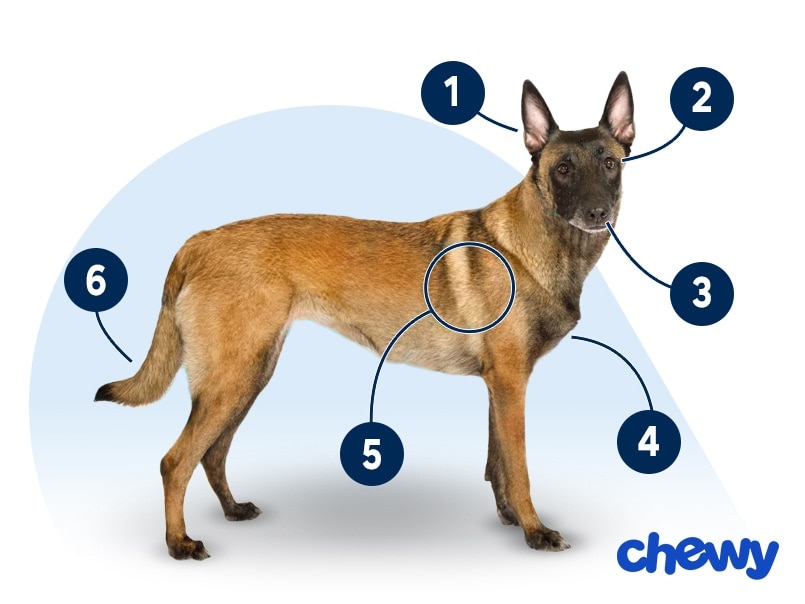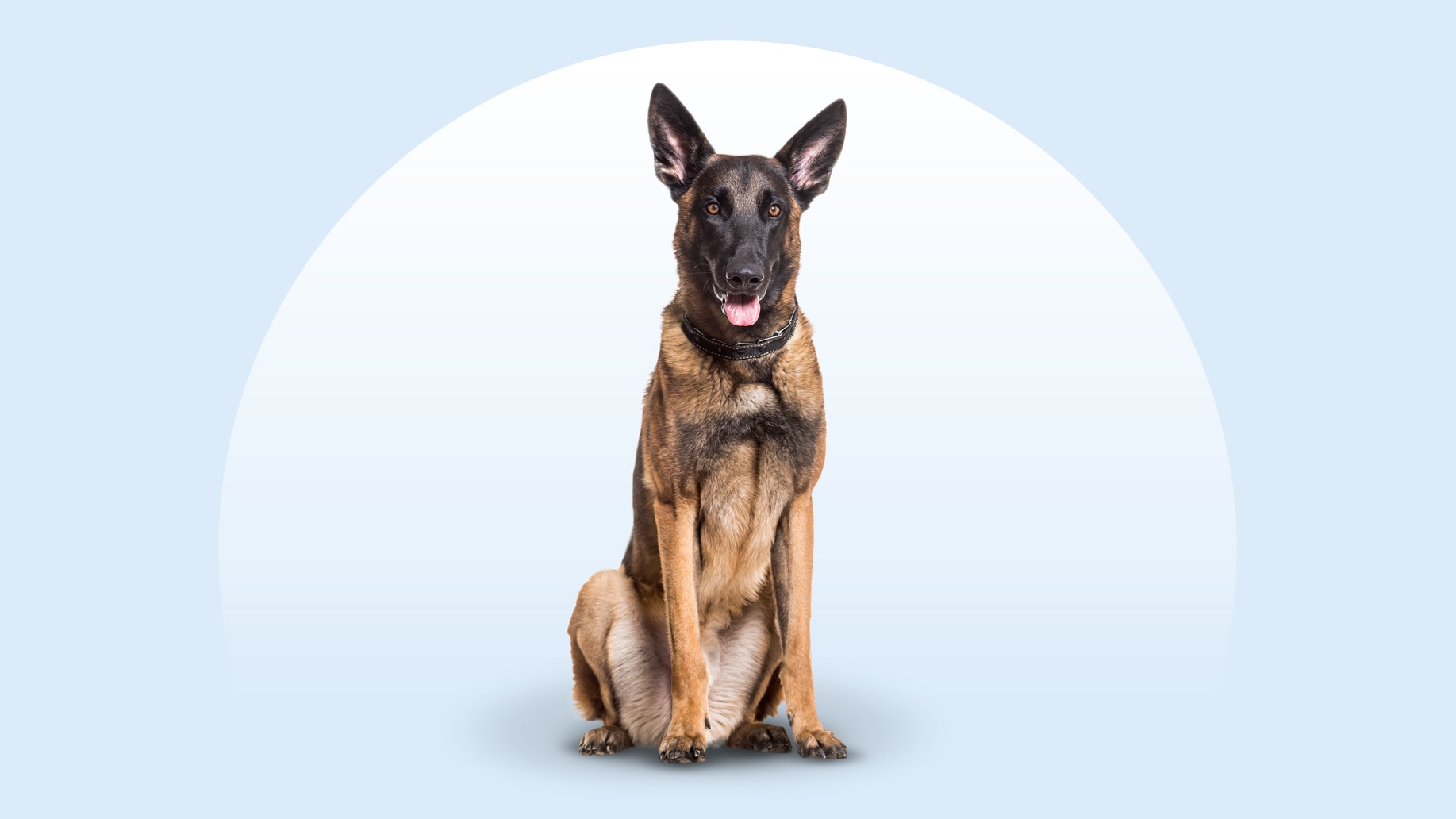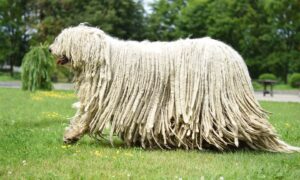Belgian Malinois
Updated December 15, 2025
Belgian Malinois
Updated December 15, 2025
Looking for a devoted best bud to accompany you on long hikes and lively runs? The extremely active Belgian Malinois needs an experienced pet parent who can offer countless ways to burn energy, see the great outdoors, and train together, too.
Determined, Sidekick, Star Athlete
40–80 pounds
22–26 inches
14–16 years
Fawn, Mahogany
If your perfect Saturday involves breakfast in bed and lounging in your pajamas, the Belgian Malinois will probably have some questions. For starters, “Why are you still lying there?” and “How soon can we go outdoors?”
Their ideal pet parent starts the day with a 5-mile run, spends the afternoon out to the hiking trail, and doesn’t come home until the sun goes down. Of course, they’ll want to be right next to you for all of this, as these dogs are bursting with energy—and devotion.
Belgian Malinois need a pet parent who’s in excellent shape, can handle their intense activity level, and (just like them) loves a good outdoor challenge.
Belgian Malinois Characteristics
Belgian Malinois Appearance
The Belgian Malinois’ alert gaze and powerful build show they’re ready for action whenever you are.
Mals sport thick, short coats in fawn or mahogany with black at the tips. With a swift, sure gait and their heads held high, a Belgian Malinois is proud to protect and serve—and play all day.

- Ears
Belgian Malinois ears are erect and triangular and sit high on their heads.
- Eyes
Their slightly oval eyes are brown.
- Nose
Their muzzle is somewhat pointed, and their nose is black.
- Coat Length
A Belgian Malinois dog has a straight and short-haired coat, with a thick undercoat and longer fur around the neck (called a collarette).
- Coat Color
Belgian Malinois colors are usually fawn or mahogany with black tips at the end, though there may be variations.
- Tail
A Belgian Malinois' tail is long and strong. It curves slightly when they’re at play.
Belgian Malinois Temperament
The Belgian Malinois’ temperament is as spirited as they come, making them a good fit for pet parents who love to be on the go. Ready to toil tirelessly at any task, a Mal is quick to respond to their person’s cues and is considered one of the smartest dog breeds in the world.
Their intelligence paired with their admirable strength is reason to salute them: They often work in search-and-rescue missions alongside the police and military.
It’s possible to bring a Belgian Malinois into a home with kids and babies, but compatibility rests heavily on early and consistent training and socialization. Children, too, must be taught how to interact with dogs. Even then, you’ll want to make sure playtime is supervised, as other animals, strangers, and sudden movements could startle this alert pup.
The Belgian Malinois has a naturally high prey drive, which means they’ll chase moving objects (think toddlers, cars, cats, and other dogs), so early obedience lessons are a must to keep everyone (including them!) safe and happy.
Raising Belgian Malinois puppies is indeed rewarding, in part because their smarts make them a joy to teach. If you choose to adopt a Mal, you’ll quickly see why their reliability and razor-sharp wits are universally adored.
How to Care for a Belgian Malinois
Belgian Malinois don’t have extensive grooming needs, as their relatively short coat is easy to manage. The time you save on hair care will be spent outside, whether in your backyard, at the park, or on a hiking trail. Exercise is no afterthought with this active breed, so lace up your sneakers.
Grooming
Training
Diet
Exercise
Environment
Belgian Malinois Health
Belgian Malinois are a fairly healthy breed, but there are a few conditions to watch out for.
- Cancer: Hemangiosarcoma is a common cancer that affects the cells that line the blood vessels. It can develop anywhere in the body, but it’s usually found on the skin, spleen, liver, and heart. If the cancer isn’t extensive, surgery and chemotherapy, may be recommended to remove or shrink the tumor.
- Eye issues: The three most common eye problems in the Belgian Malinois are cataracts, chronic superficial keratitis (pannus), and progressive retinal atrophy (PRA). While there is no treatment for PRA, dogs often adjust well to vision loss. Pannus can be treated with drug therapy, and surgery is the go-to treatment for cataracts.
- Hip and elbow dysplasia: Hip dysplasia is when the ball of the femur isn’t properly positioned in the hip socket, and elbow dysplasia alters the function of the elbow joint. Both are caused by abnormal joint development, and both can lead to pain, an inability to walk properly, and arthritis in dogs.
Belgian Malinois History
Recognized as an official American Kennel Club (AKC) breed in 1959, the Belgian Malinois’ origins can be traced to the city of Malines, Belgium, which is responsible for the dog’s name.
In Belgium, Mals were valued on farms and ranches, keeping track of sheep and cattle herds. The breed came to the U.S. in 1911 and grew in popularity until World War II, when the import of European dogs was halted. Then in the 1960s, Belgian Malinois became popular once again.
This pup isn’t nearly as well-known as their near-doppelgänger, the German Shepherd, but the Belgian Malinois temperament and their talents are also highly coveted by police and military as service dogs. Cairo, a famous Belgian Mal, is remembered as a pup of exceptional bravery who went with members of the U.S. Navy Seal Team Six to help in the raid on Osama Bin Laden in 2011.
A Belgian Malinois puppy can cost anywhere from $1,500 to $4,000. If you choose this route, pick a responsible breeder.
You may also be able to adopt a Belgian Malinois. Search for a Belgian Malinois rescue in your area, such as the New York Belgian Malinois Rescue, or check out Mission Rescue K9, an organization devoted to giving working service dogs like Belgian Malinois a good retirement home with a loving pet parent. You can also search Chewy’s database of adoptable dogs in your area.








